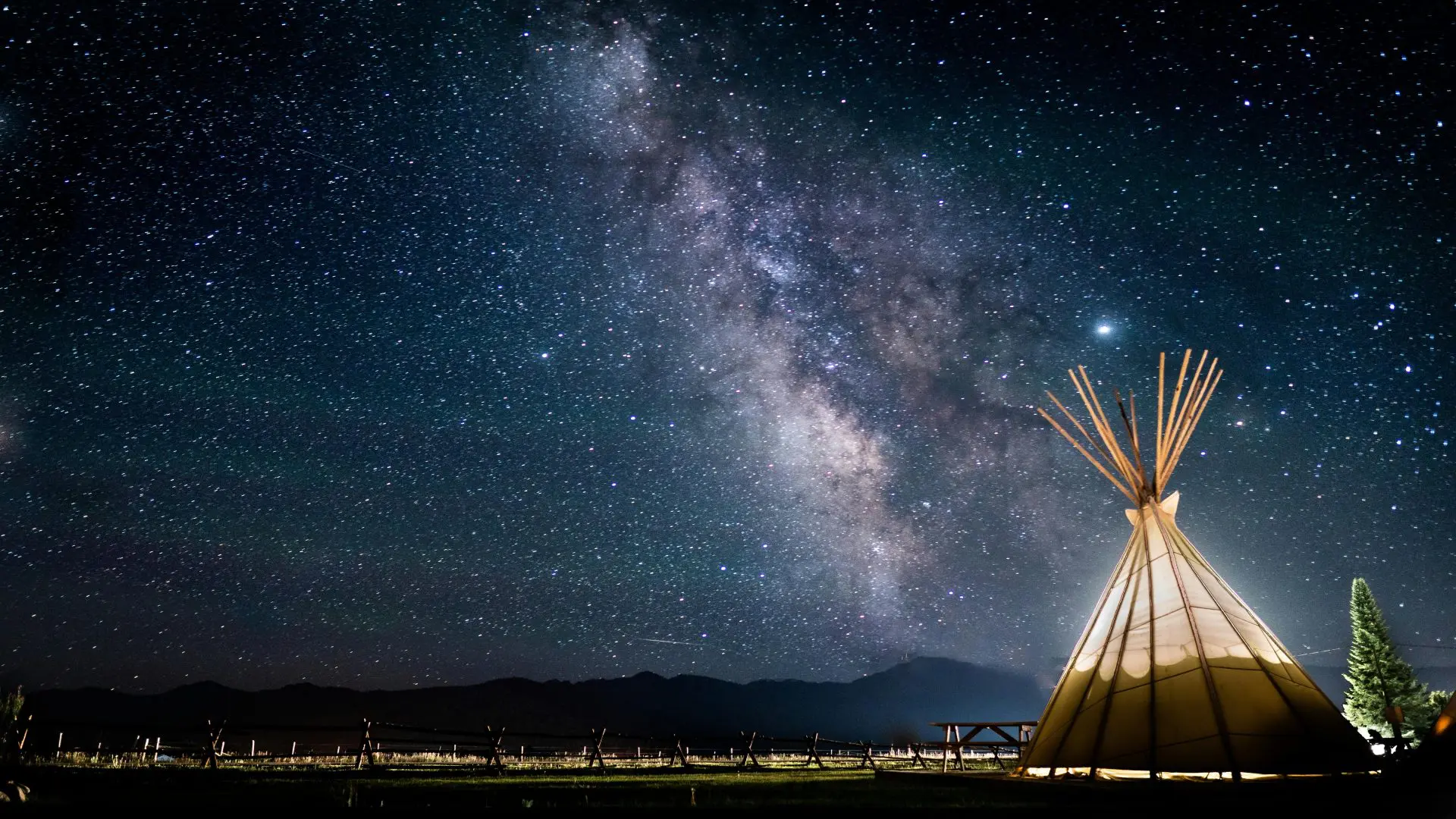How to Pitch a Tent Like a Pro

Looking for more amazing products? Check out our online store and explore our collection here! Happy shopping!
Before diving in, please note: This post is for informational purposes only. If you’d like to know more about how we approach topics, feel free to check out our friendly Disclaimer Page.
Hey there, amazing readers! 
We’re committed to delivering quality posts, and your support (even just sticking around despite the ads) means everything to us. So, bear with us, and thanks for helping us keep the good vibes rolling. Now, on to the fun stuff!
TRANSLATE BUTTON AT THE END OF THE ARTICLE
Setting up a tent may seem daunting, especially if you’re new to camping.
However, with some essential tips and techniques, you can pitch a tent like a seasoned camper.
This guide will walk you through the process step by step, ensuring you create a secure and comfortable shelter for your outdoor adventure.
Whether you’re camping in the woods, at the beach, or in your backyard, mastering the art of tent pitching will enhance your camping experience.
1. Choose the Right Location
Selecting the perfect spot for your tent is crucial for a successful camping trip.
Here’s what to look for:
Flat terrain: Look for a flat, even surface that is free of rocks, sticks, and other debris.
This will make your sleeping experience more comfortable.
Uneven ground can lead to uncomfortable sleeping positions and waking up with sore muscles.
Proximity to water: Being near a water source is convenient for cooking, cleaning, and drinking.
However, ensure you’re not too close to the water.
Aim for at least 200 feet away to avoid flooding and to minimize the impact on wildlife.
This distance helps protect both you and the environment.
Wind direction: Consider the wind direction when choosing your site.
Position your tent entrance away from the wind to help reduce drafts and provide better airflow.
This can make a significant difference in your comfort level, especially during windy nights.
Sun exposure: If you’re camping in warm weather, consider setting up your tent in the shade to keep it cooler during the day.
Conversely, if you’re camping in colder weather, seek a spot that gets morning sunlight to warm up your tent early.
Natural barriers: If possible, look for natural windbreaks like trees, bushes, or rock formations.
These can help shield your tent from strong gusts and provide additional protection from the elements.
Pro tip: Always check the weather forecast before your trip.
This can influence your choice of location, especially if rain or high winds are predicted.
Being prepared can save you from a wet and uncomfortable night.
2. Unpack Your Gear
Once you’ve selected the ideal spot, it’s time to unpack your gear.
Here’s how to organize your setup efficiently:
Lay out the tent: Remove your tent from its bag and lay it out on the ground.
Ensure the tent floor is facing down to protect it from dirt and debris.
This helps to keep the inside clean and makes it easier to set up.
Identify components: Familiarize yourself with all components of your tent, including the rainfly, poles, stakes, and guylines.
Organizing everything beforehand will streamline the setup process.
Having all parts accessible can prevent unnecessary frustration.
Check for damage: Before pitching your tent, inspect it for any damage or missing pieces.
This will save you time and frustration later.
Look for holes, tears, or issues with the zippers.
Address any problems as soon as you find them, either by repairing or replacing damaged parts.
Consider an organized approach: If you’re camping with friends or family, divide the tasks.
Assign someone to set up the tent while others prepare the campsite.
This teamwork can speed up the setup process and make it more enjoyable.
3. Assemble the Tent Poles
Most tents come with poles that need to be assembled before you can pitch the tent.
Follow these steps:
Connect the poles: Most tent poles are connected by elastic cords.
Start by laying them out on the ground and then connect each section until you have a complete set of poles.
Be gentle to avoid damaging the poles.
Identify pole sleeves: Check your tent for pole sleeves or clips where the poles will be inserted.
Knowing where each pole goes will make the setup easier.
Some tents may have color-coded poles and sleeves to simplify the process.
Create a structure: For tents with a dome shape, insert the poles into the designated sleeves or clips.
As you do this, ensure the poles are properly secured and hold the tent up.
If your tent has a hub or a central connection point, make sure it is assembled correctly.
Stabilize the structure: Once the poles are inserted, adjust them gently to create a stable structure.
This will prevent the tent from collapsing as you continue setting it up.
Pro tip: If your tent has additional poles for support (like cross poles), add them for enhanced stability.
This can be especially important in windy conditions.
4. Secure the Tent to the Ground
Once your tent structure is in place, it’s time to secure it to the ground.
Here’s how to do it properly:
Position the tent: Make sure your tent is properly oriented and centered on the designated area.
Adjust its position if necessary.
This is also a good time to double-check the orientation of the entrance.
Stake it down: Use tent stakes to anchor the tent to the ground.
Drive the stakes into the ground at a 45-degree angle for maximum stability.
Be sure to place stakes at all four corners and along the sides if your tent design allows.
This will help hold the tent in place against wind and rain.
Tighten guylines: If your tent has guylines, attach them to the appropriate points on the tent.
Stake down the guylines at a distance from the tent to create a more secure setup.
This helps to prevent the tent from collapsing in windy conditions.
Guylines provide crucial support during storms.
Double-check stakes: After securing everything, give each stake a gentle pull to ensure they are firmly in place.
If any move, drive them deeper into the ground.
Pro tip: Use a rock or mallet to drive the stakes into hard ground more easily.
If the ground is too hard, consider using a different type of stake designed for challenging terrain.
5. Add the Rainfly
If your tent comes with a rainfly, now is the time to attach it.
The rainfly provides an additional layer of protection against rain and moisture.
Follow these steps:
Locate the rainfly: Unpack the rainfly and identify the sides that correspond with your tent.
Ensure you understand how the rainfly attaches, as this can vary by tent model.
Drape it over the tent: Place the rainfly over the tent, ensuring it covers the entire structure.
Make sure it fits snugly to prevent rain from seeping in.
If your rainfly has a vestibule, position it to cover the entrance.
Secure the rainfly: Attach the rainfly to the tent using clips or hooks provided.
If there are additional guylines, stake those down as well for added stability.
Tightening the rainfly helps prevent water pooling on the surface.
Check for leaks: After attaching the rainfly, inspect the seams and areas where water could seep through.
If you notice any potential leaks, consider using seam sealer to patch them.
Pro tip: If rain is expected, consider practicing pitching your tent with the rainfly at home.
This will help you feel more prepared and confident when the weather changes.
6. Organize Your Inside Space
Once your tent is pitched and secured, it’s time to make it comfortable.
Here’s how to organize the interior:
Lay down a ground tarp: Consider placing a tarp or footprint under your tent.
This provides an extra layer of protection against moisture and wear.
It also helps keep the tent clean, making your camping experience more enjoyable.
Set up sleeping areas: Arrange sleeping bags, pads, and other gear inside the tent.
Keep heavier items towards the bottom of the tent to prevent shifting.
This creates a more stable sleeping area and maximizes the space.
Create storage solutions: Utilize pockets and hooks inside the tent for gear organization.
This helps keep your space tidy and maximizes your living area.
Storing smaller items in designated pockets will keep your tent clutter-free.
Plan for accessibility: Place items you’ll need frequently (like snacks, flashlights, and toiletries) in easily accessible areas.
This will make your camping experience smoother and more enjoyable.
Pro tip: Use a small storage bin or bag for personal items.
This helps to keep everything organized and makes it easier to find what you need when you wake up in the middle of the night.
7. Practice Tent Etiquette
Respecting the camping environment and fellow campers is essential for a positive experience.
Keep these tips in mind:
Leave no trace: Follow the principles of Leave No Trace by cleaning up after yourself and minimizing your impact on the environment.
Dispose of trash properly and avoid damaging plants and wildlife.
Encourage others to do the same.
Be mindful of noise: Keep noise levels to a minimum, especially in communal camping areas.
Respect the peace of fellow campers.
If you’re listening to music, use headphones or keep the volume low.
Respect boundaries: Keep your tent and gear within your designated campsite.
This shows consideration for others and helps maintain a pleasant atmosphere.
If you’re camping with a group, establish clear boundaries to avoid stepping on each other’s toes.
Be friendly: A smile and a wave can go a long way in the camping community.
Strike up conversations with fellow campers.
You never know when you might make a new friend!
Pro tip: If you’re cooking or having a campfire, be aware of wind direction.
This can prevent smoke from blowing into other campsites and bothering your neighbors.
8. Prepare for Changing Conditions
The weather can be unpredictable, especially in the great outdoors.
Here’s how to prepare for changing conditions:
Check the forecast: Before your trip, check the weather forecast for the area where you’ll be camping.
This helps you pack accordingly and make informed decisions about your tent setup.
Be ready for wind: If high winds are expected, reinforce your tent by staking it down more securely and using additional guylines.
This can prevent damage to your tent and enhance your safety.
Know how to adjust: Be flexible and ready to adjust your setup if the weather changes.
If you notice rain approaching, ensure your rainfly is secure.
Be prepared to move your tent if flooding occurs.
Stay informed: Carry a portable weather radio or download a weather app on your smartphone to stay updated on conditions while camping.
This will help you make timely decisions if severe weather threatens.
Pro tip: Have a backup plan in case the weather turns severe.
Familiarize yourself with nearby shelters or alternative camping locations in case you need to relocate.
Conclusion
Pitching a tent might seem challenging at first, but with the right techniques and tips, you can easily master the process.
By choosing the right location, organizing your gear, and following best practices, you’ll create a secure and comfortable space for your outdoor adventures.
Remember, practice makes perfect!
The more you set up your tent, the more confident you’ll become.
Happy camping!

The Enlightenment Journey is a remarkable collection of writings authored by a distinguished group of experts in the fields of spirituality, new age, and esoteric knowledge.
This anthology features a diverse assembly of well-experienced authors who bring their profound insights and credible perspectives to the forefront.
Each contributor possesses a wealth of knowledge and wisdom, making them authorities in their respective domains.
Together, they offer readers a transformative journey into the realms of spiritual growth, self-discovery, and esoteric enlightenment.
The Enlightenment Journey is a testament to the collective expertise of these luminaries, providing readers with a rich tapestry of ideas and information to illuminate their spiritual path.
Our Diverse Expertise
While our primary focus is on spirituality and esotericism, we are equally passionate about exploring a wide range of other topics and niches 

To ensure we provide the most accurate and valuable insights, we collaborate with trusted experts in their respective domains 
Our blog originally focused on spirituality and metaphysics, but we’ve since expanded to cover a wide range of niches. Don’t worry—we continue to publish a lot of articles on spirituality! Frequently visit our blog to explore our diverse content and stay tuned for more insightful reads.
Hey there, amazing reader! 
Check out our store here and take a peek at some of our featured products below! Thanks for being awesome!











